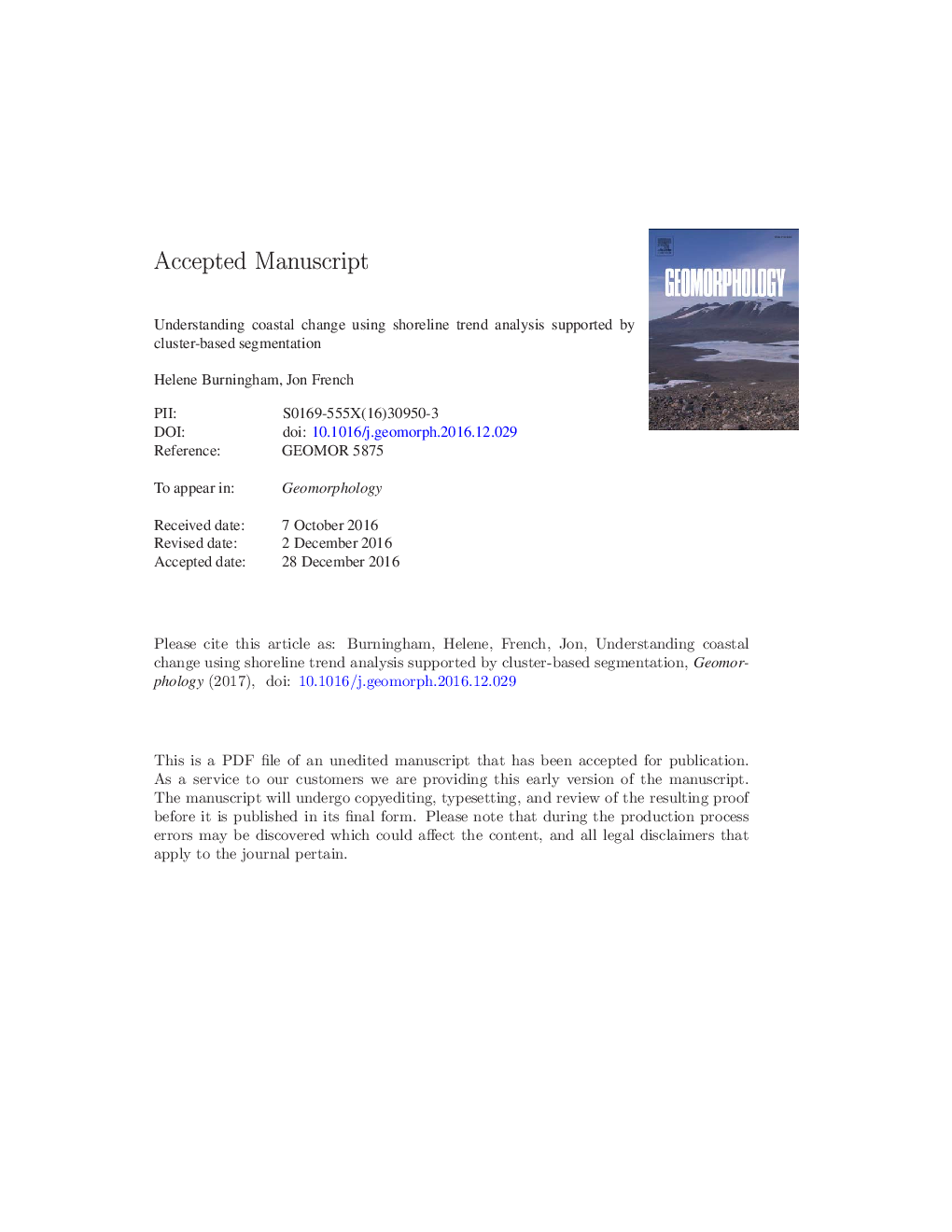| Article ID | Journal | Published Year | Pages | File Type |
|---|---|---|---|---|
| 5781123 | Geomorphology | 2017 | 48 Pages |
Abstract
Shoreline change analysis is a well defined and widely adopted approach for the examination of trends in coastal position over different timescales. Conventional shoreline change metrics are best suited to resolving progressive quasi-linear trends. However, coastal change is often highly non-linear and may exhibit complex behaviour including trend-reversals. This paper advocates a secondary level of investigation based on a cluster analysis to resolve a more complete range of coastal behaviours. Cluster-based segmentation of shoreline behaviour is demonstrated with reference to a regional-scale case study of the Suffolk coast, eastern UK. An exceptionally comprehensive suite of shoreline datasets covering the period 1881 to 2015 is used to examine both centennial- and intra-decadal scale change in shoreline position. Analysis of shoreline position changes at a 100Â m alongshore interval along 74Â km of coastline reveals a number of distinct behaviours. The suite of behaviours varies with the timescale of analysis. There is little evidence of regionally coherent shoreline change. Rather, the analyses reveal a complex interaction between met-ocean forcing, inherited geological and geomorphological controls, and evolving anthropogenic intervention that drives changing foci of erosion and deposition.
Related Topics
Physical Sciences and Engineering
Earth and Planetary Sciences
Earth-Surface Processes
Authors
Helene Burningham, Jon French,
